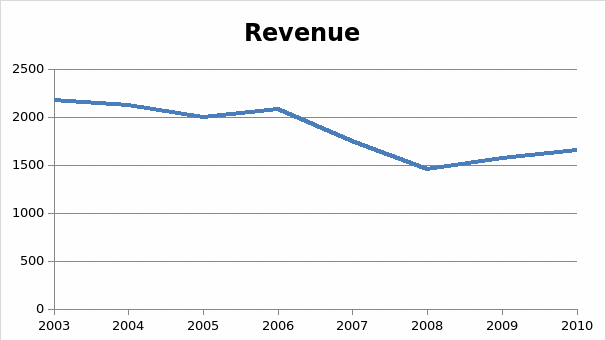Introduction
EMI Music is one of the largest and trusted sound recording studios in the world. In general, this is the synonym of reliable cooperation, high-quality services, and trust of the clients, hence, the reputation of the company is high enough. As for the competitive environment of the company, there are numerous competent. The paper aims to analyze the competitive environment as well as the financial performance of the company. (Vittes, 2009)
Analysis
Competitive Environment
EMI is regarded as the third largest sound recording studio in the world after Universal Music Group and Sony Music Entertainment. EMI sells its products in 50 states of the world, and the company owns the rights for more than 1 million music compositions. The key competitors of the company in the British sound recording market are Modern World Records, Rockfield Studios, and Yellow Shark Studio. (Samuels, 2008)
Financial Performance
(Backman, 2004; Coyne and Witter, 2002; Khan and Hildreth, 2004)

The strategy of the company presupposes providing high-quality sound recording services for musicians and singers. This involves offering them musical instruments, sound recording, and sound processing equipment. The music should be provided to consumers in any form, at any time, and in any place. The current changes in the company are closely linked with the new practice of music retail – digital and mobile content promotion, as the sales of this type of data, have increased essentially for the recent few years. Additionally, by NPD Group marketing studies, the sales of internet sold music will equal CD sales volumes by the end of 2010. (Galo, 2010)
Recommendations
First, the company should pay attention to improving the financial situation. Hence, the first problem that should be resolved is the shareholders’ loan. It needs to be decreased, and issuing new shares will be the worst solution.
This should be performed by initiating retail programs associated with internet content downloading and sharing, however, music is becoming more and more available, considering file-exchange services and p-2-p networks, hence, music is no longer the main revenue point, as people have an opportunity to get it for free or listen online.
Economic Information
(McMenamin, 2004; Turkington and Walsh, 2003)
The business performance of the company has worsened over the latest five years. On the one hand, it is linked with the economic situation, on the other hand, inaccurate financial management played its role.
Economic Influence
Economic processes in the music and sound recording industry are generally influenced by two closely related processes: development of digital technologies, and development of informational space which is hard to control. The former tendency has simplified the sound recording and processing, the latter has improved the illegal music exchange process, which caused essential losses within the entire industry.
Digital sound recording decreased the costs by 40%, however, the losses caused by the illegal music spread and exchange since 2005 are 280%. Consequently, the company is fully subjected to the rules of informational society which can not be controlled. On the other hand, the development of the global network has opened additional opportunities for delivering music to consumers. The new economic influence is formed by a single song bought through iTunes or listened on Last.FM service: people do not purchase the whole albums, as they have an opportunity to choose the melodies they like, and pay less. On the other hand, the number of consumers has increased.
The financial processes on the share market, as well as the necessity to change the financial management principles, became the reason for changing the financial structure of the company. Currently, the company is private and debt-based, as the sound recording industry is not very popular among investors. Hence, the financial management principles of the company need to be focused on restructuring the retail policy, as this is the key requirement of the changed economic situation.
Appendix
Financial ratios
Current ratio = Current Assets / Current Liabilities
Quick Ratio = Current Assets – Inventory / Current Liabilities
Receivables Turnover = Annual Credit Sales / Accounts Receivable
Reference List
Backman, J. 2004. Price Practices and Price Policies: Selected Writings. New York: Ronald Press.
Coyne, K. P., & Witter, J. W. 2002. What Makes Your Stock Price Go Up and Down: Identifying and Understanding Important Individual Investors Can Help Corporate Executives Predict the Direction of Share Prices. 29
Galo, G. A. 2010. Music & Arts. ARSC Journal, 39(2), 351
Khan, A. & Hildreth, W. B. (Eds.). 2004. Financial Management Theory in the Public Sector. Westport, CT: Praeger.
McMenamin, J. 2004. Financial Management: An Introduction. London: Routledge.
Samuels, A. P. Big Jon Platt: EMI Music Publishing’s New West Coast President, Big Jon Platt, Gives Us the Scoop on What’s Hot and Who to Look for in 2008. Ebony, 63, 58
Turkington, J., & Walsh, D. 2003. Price Discovery and Causality in Share Price Index Futures Market. Journal of Management, 24(2), 97.
Vittes, L. 2009. The Complete Emi Recordings. Strings, 23, 80